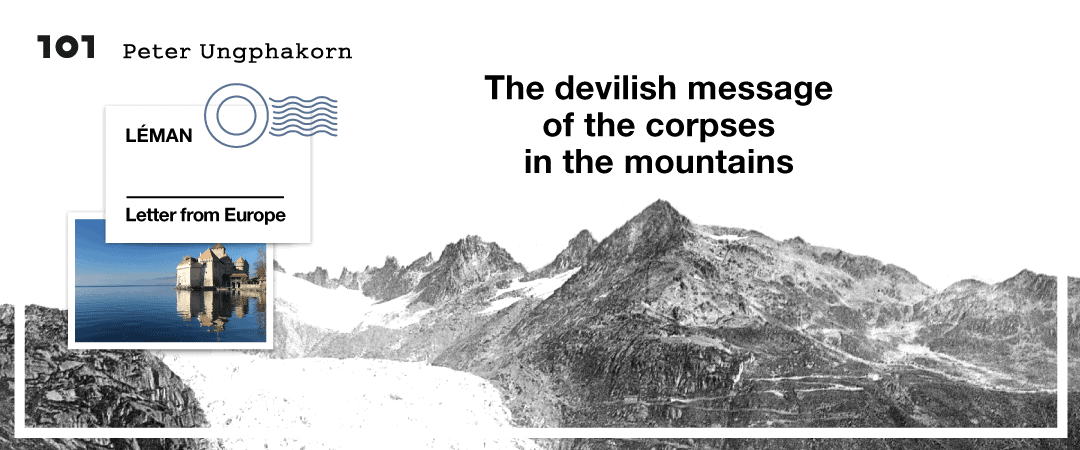Peter Ungphakorn
Martigny is a town of about 18,000 people near the western end of Switzerland’s canton of Valais. Up to this point, the Rhône River has flowed 140km southwest from the Rhône glacier, down the valley that forms a deep, flat-bottomed trench between two Alpine mountain ranges with peaks reaching 3,000–4,000 metres or more, the most famous being the 4,478-metre Matterhorn.
Here, the river’s path is abruptly blocked by more mountains, forcing it to take a sharp right-angle turn to the north. After 25km it flows out into Lake Léman, at 580-square kilometres, one of the largest in western Europe. It continues through the lake past Lausanne and Geneva, and then as a proper river again, into France and eventually down to the Mediterranean Sea.
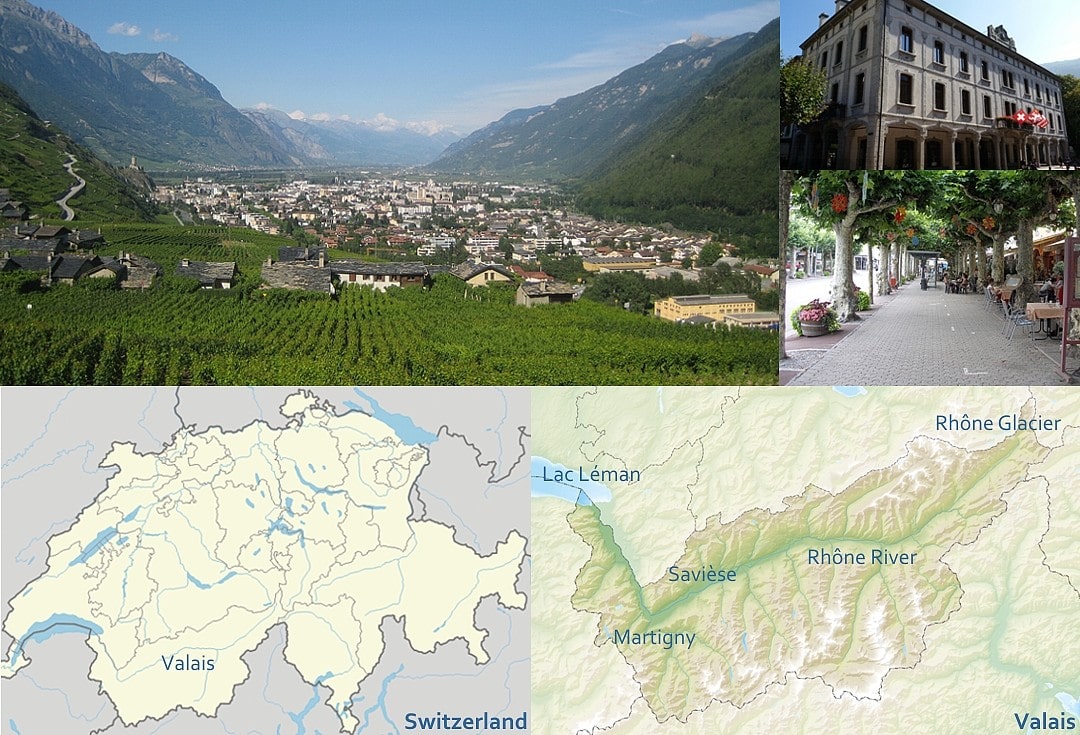
Martigny boasts three tourist attractions, two of them representing the town’s historical and strategic importance.
The most popular is the Gianadda museum and art gallery. Another is a group of roman archaeological remains, including an amphitheatre and a mansion. Some are in the Gianadda’s gardens.
The third is a museum about Saint Bernards, complete with kennels housing puppies and fully grown dogs. For over two centuries, these gentle giants played an important role in tracking and rescuing people stranded or even buried in snow in the mountains.
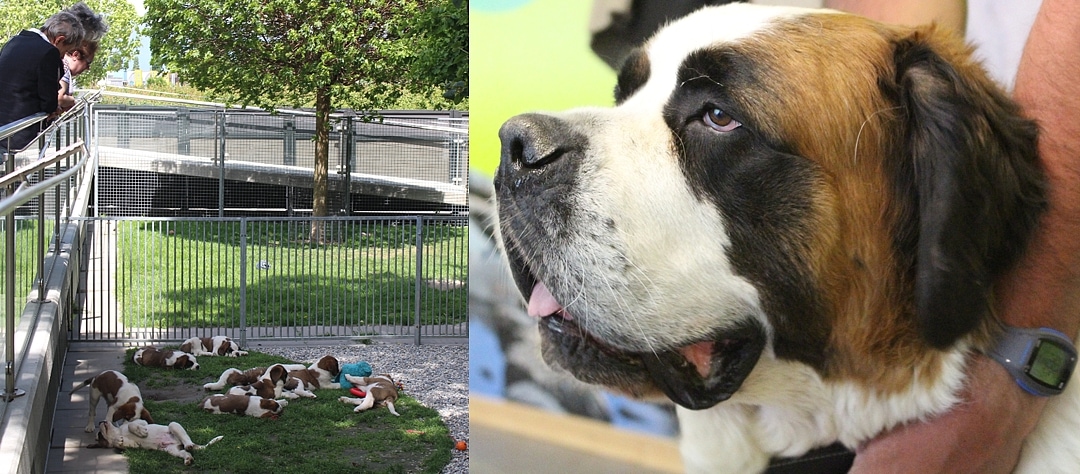
Snow, glacier-fed rivers, mountain pastures for cattle and passes through the Alps are among the major ingredients of what makes Switzerland. Martigny is at the crossroads of all of those.
Historically the Swiss relied on controlling the handful of passes that allowed goods, travellers, pilgrims and armies to cross between what are now Switzerland, northeastern France and Germany to the north and Italy and parts of eastern France to the south.
Immediately south of Martigny is the Grand Saint Bernard pass, soaring 2,000 metres above the town before the road zig-zags down towards Aosta in Italy. Another route heads west, linking the Swiss Rhône valley with Chamonix (near the famous Mont Blanc) in France. Then, there is the Rhône itself, flowing down in one direction and away in another.
Martigny’s location was therefore strategic. The Romans conquered the area so they could control the route to Italy. Centuries later, in around 1050, Saint Bernard founded a hospice, run by monks for travellers, at the pass, which was later named after him.
By the late 17th century the large mountain dogs that are now also named after him were based at the hospice and trained to cross deep snow and detect lost travellers by scent. They are legendary, although part of the legend is untrue — they never carried barrels.
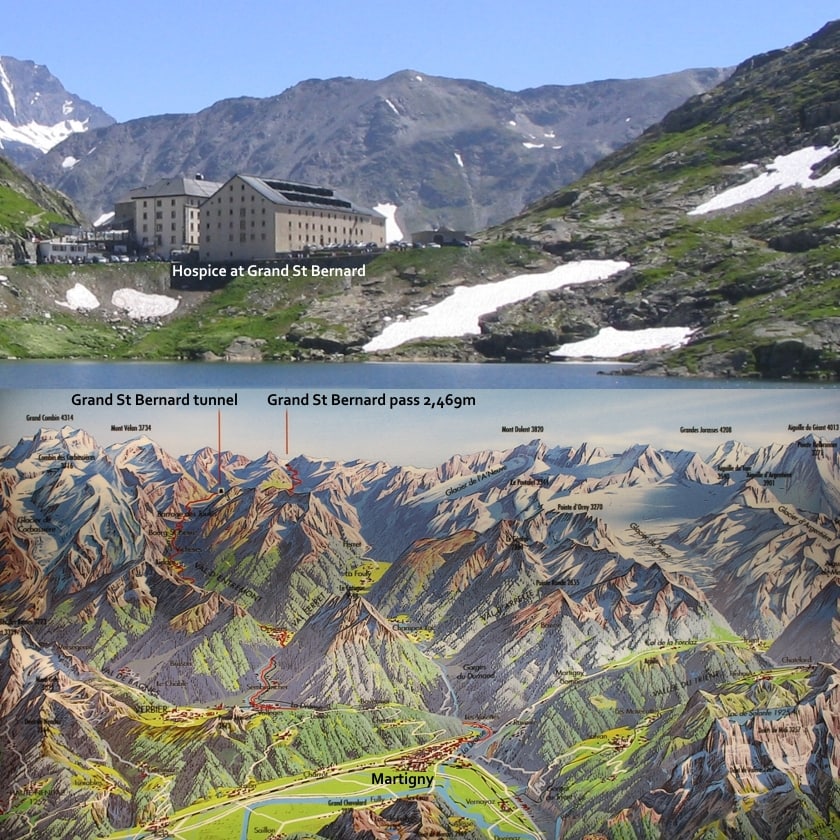
Today, St Bernard dogs are no longer used for search and rescue in the snow. More modern Alpine crossings are available, including the world’s longest rail tunnel underneath the St Gotthard pass, which was opened last year. And the dogs are not suitable for the helicopters that are now used in mountain rescue.
Gruesome discovery
But it was neither the dogs nor the helicopters that discovered two corpses earlier this summer, on a snow-covered glacier at about 2,600 metres altitude, and about 30km northeast of Martigny across the Rhône valley. The bodies were brought down by helicopter, however.
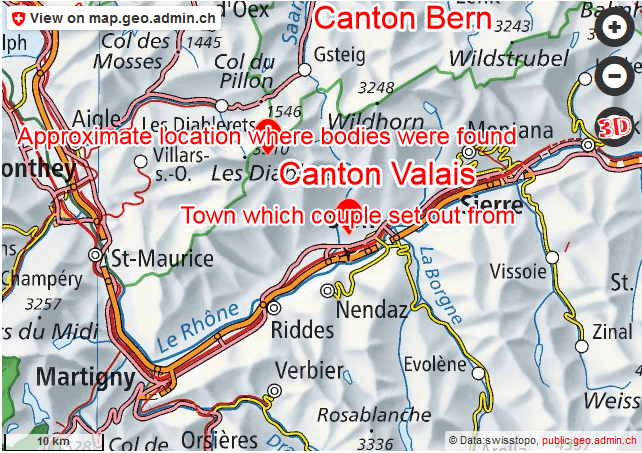
DNA testing has confirmed that the two were Marcelin Dumoulin, a shoemaker, and his wife Francine, a teacher. They came from Savièse, a commune (sub-district) just north of Sion, the capital of Valais, a few kilometres upstream from Martigny.
The couple had disappeared while hiking near where their cows were grazing, almost exactly 75 years ago, on August 15, 1942. By then, St Bernard dogs were no longer being used for search and rescue.
There had been no trace of the couple before they were found this year on Tsanfleuron glacier, near the ski resort of Les Diablerets, where they may have fallen accidentally.
“Local legend has it that the glacier at Les Diablerets is inhabited by devils and that has spooked local residents for years,” reported the New York Times (“diable” means devil in French).
It also quoted the Valais police spokesman as saying that residents of Savièse were known more for their appreciation of wine (a famous product of the region), their fondness for theatre and their tenacity.
At first the annual snowfalls buried the bodies deeper and deeper, freezing and preserving them. Now the snow is gradually melting, exposing the bodies enough for them to be discovered by a ski resort worker taking a walk. Other long-frozen bodies have also been found recently.
For most people this is further, grisly evidence of climate change, already a serious problem for Valais and other parts of Switzerland. Even in deep winter, many of the lower ski slopes now rely on artificially-made snow to keep skiers happy as average temperatures rise.
There is also serious concern in Switzerland and around the world about the impact on the glaciers, which feed the rivers that supply water to farmland, towns and cities. The Rhône itself has suffered. In 150 years, the glacier that is its source has shrunk by over 1,400 metres.
Pictures from 1900 and 2008 show how far it has retreated: from the bottom of the valley right up to the first level, leaving about a kilometre of bare rock exposed. A year ago, artist Stefan Schlumpf publicised the problem by covering the glacier with blankets in order to “save” it.

Lucifer and global food security
Valais is also famous for the wines produced on the south-facing sunny slopes of Savièse, Sion and other districts on the Rhône’s north bank. This year, production is at serious risk because the vineyards were devastated by unseasonal frost in the spring after an unusually warm winter. Then, in summer, those in the Savièse area were struck by a hailstorm.
But this was nothing compared with what has been happening over those Alpine passes, in Italy.
In July and early August, much of southern Europe was hit by a drought and extreme heat — over 40 degrees and nicknamed “Lucifer” (scroll down on this story to see a map or find an even scarier one here).
The Pope’s response to Lucifer (aka the devil) was to order the Vatican’s fountains to be switched off in solidarity with his Roman and Italian neighbours.
Experts say the problem could get much worse. The BBC quoted a scientific report in the Lancet Planetary Health Journal warning that if nothing is done to curb the effects of climate change, by 2100, extreme weather could kill up to 152,000 people yearly in Europe — 50 times more deaths than reported now.

This is not just a problem for Valais, Switzerland or Europe. Extreme weather might also impact food supplies and food security around the world, according to research using new methods, recently released by the British Meteorological Office.
“Crop production shocks due to extreme weather events have the potential to impact food security across the world, as well as in the country of production, such as China,” the Met Office says.
It says the probability of adverse conditions simultaneously across major food producers such as China and the United States is estimated to be as high as 6% per decade.
Lead author Chris Kent adds: “This would be a scenario of multi-breadbasket failure in which impacts would be felt at the global scale. This is the first time we have been able to quantify the risk; it hasn’t been observed in the last 30 years, but the indications are that it is possible in the current climate.”
Climate change has brought relief to 79-year-old Marceline Udry-Dumoulin. She has now been able to say a proper goodbye to the parents she hadn’t seen since she was only four years old.
But it is bad news for most of the inhabitants along the Rhône in the canton of Valais, among the vineyards and at the ski resorts. They are well aware that climate change is real and close to tipping point. So should we all be.
Peter Ungphakorn is based on the shores of Lake Léman in Switzerland. He spent almost two decades with the WTO Secretariat, Geneva. Before that he worked for The Nation and the Bangkok Post. He now blogs on trade, Brexit and other issues at https://tradebetablog.wordpress.com/
